
Roots
To journey into the heart of textured hair is to step onto ancestral ground, a place where each coil and curl whispers tales of enduring strength, cultural ingenuity, and profound connection. It is not merely about strands and scalp, but about a living legacy, a testament to resilience passed down through generations. When we consider whether historical hair practices shape our current understanding of beauty for textured hair, we look not for simple echoes, but for the very foundation upon which modern standards stand. This exploration invites us to witness how the wisdom of ages past, often born of necessity and circumstance, now guides our hands in care and our minds in appreciation.
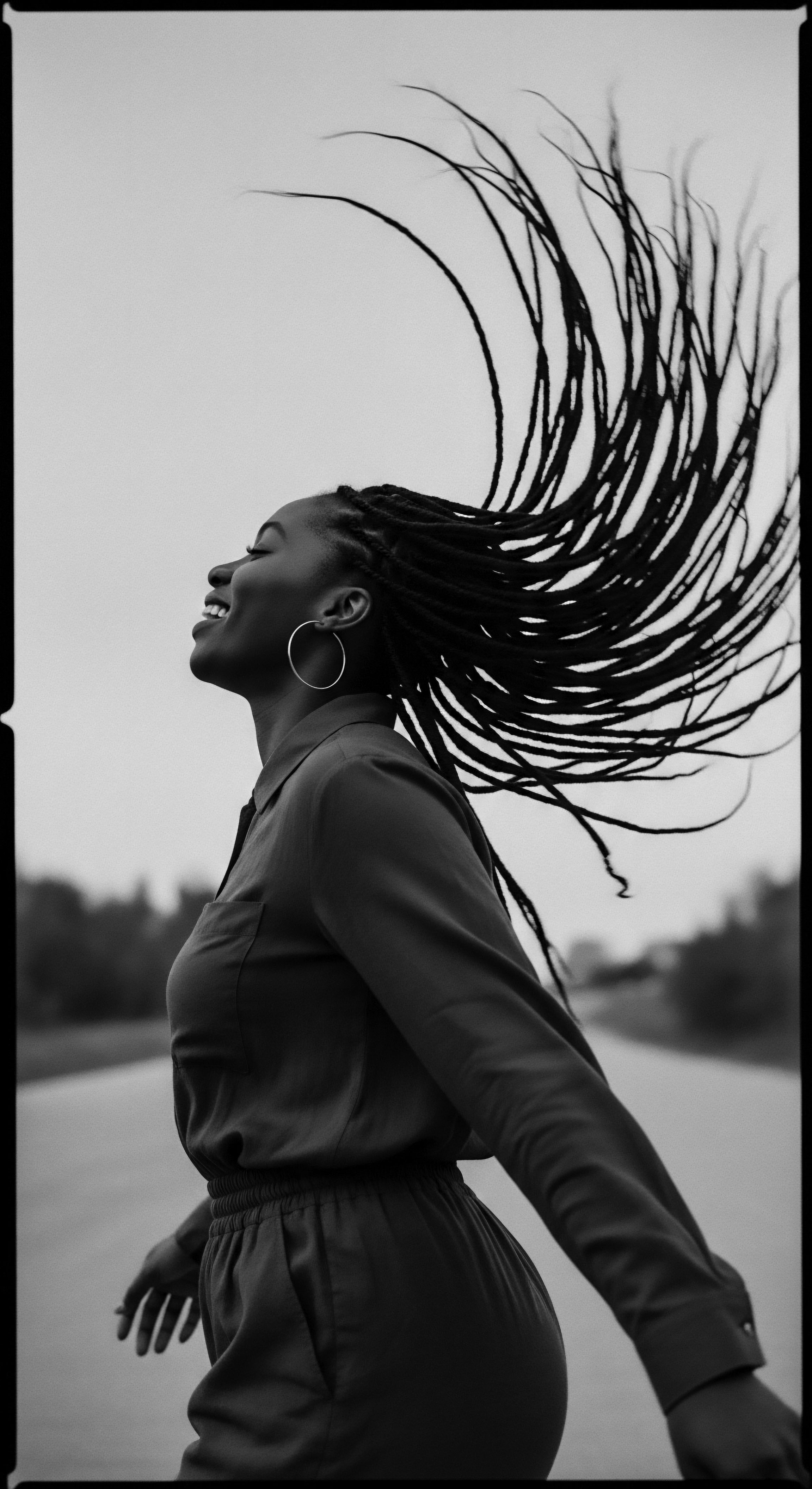
Hair’s Elemental Blueprint
The biological architecture of textured hair, often categorized as Afro-textured, holds secrets from deep time. Scientists believe this specific hair type, with its tight coils and distinctive elliptical follicle shape, developed as an adaptation to intense ultraviolet radiation in ancestral African climates. It may even represent the earliest hair form among modern humans. This coiled structure also permits more air to pass through, offering a cooling effect for the scalp.
The spiraled nature of these strands, while beautiful, does mean fewer cuticle layers often lie flat, leading to less natural oil distribution along the shaft and a greater propensity for dryness. Understanding this innate predisposition to moisture loss, rooted in ancient environmental adaptations, helps explain why historical practices so often centered on hydration and protective styling.
The intrinsic biology of textured hair, shaped by ancient climates, underpins a legacy of care centered on moisture and protection.
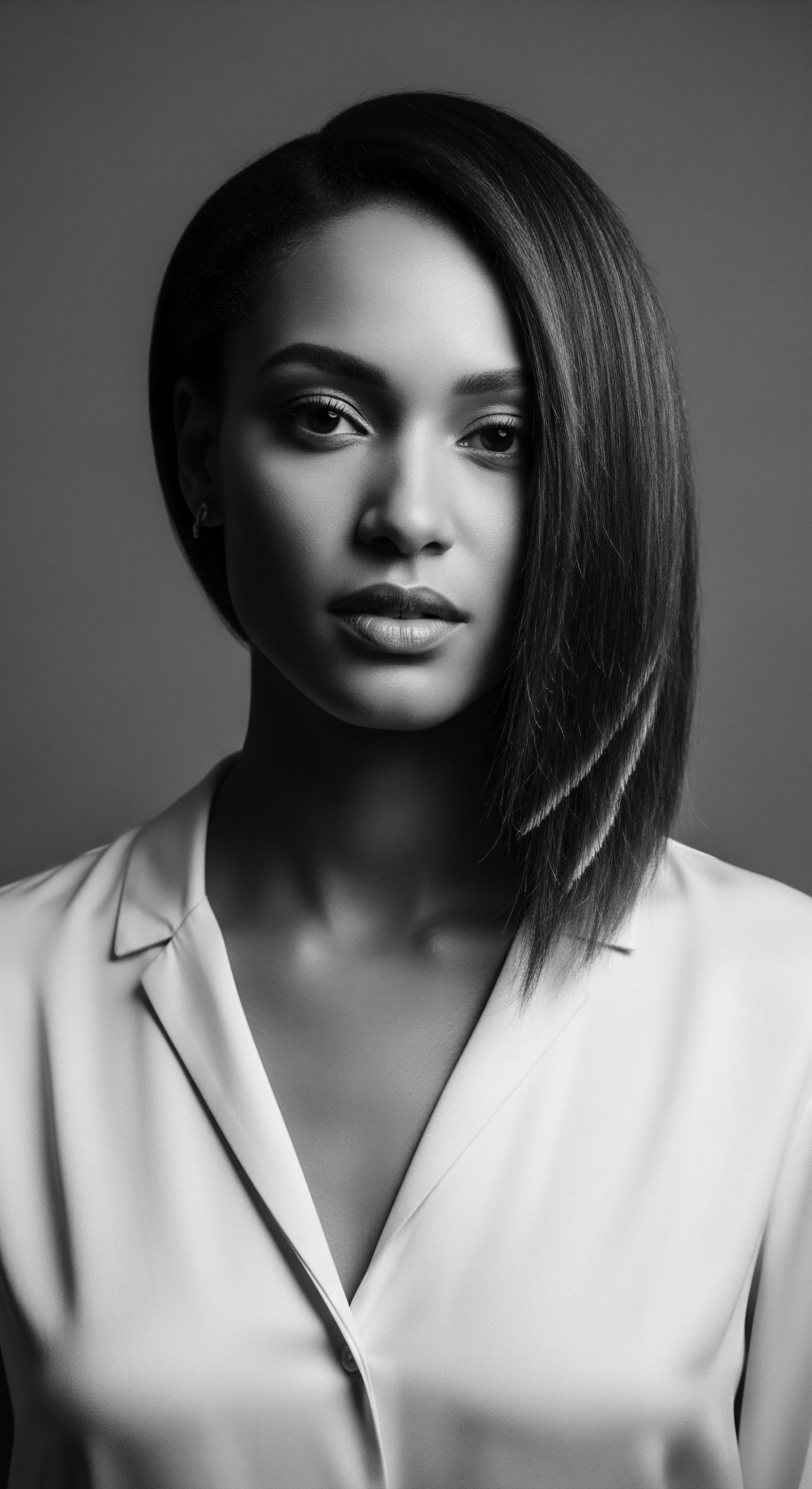
Language and Lineage in Hair Classification
The language we use to describe textured hair often carries the weight of history. Terms like “kinky,” “wooly,” or “nappy,” though once prevalent, now bear a derogatory association stemming from eras of racial subjugation when African Americans were considered subordinate. A movement towards more affirming language has gained traction since the Civil Rights and Black Power eras, aligning with a broader reclamation of natural beauty and heritage.
Consider how traditional African societies possessed their own intricate classifications, not based on curl pattern, but on social indicators. Hairstyles communicated an individual’s:
- Geographic Origin ❉ The styles could pinpoint a person’s community or region.
- Marital Status ❉ Certain arrangements conveyed whether one was single, married, or widowed.
- Age ❉ Styles marked transitions from childhood to adulthood and beyond.
- Ethnic Identity ❉ Distinct styles belonged to specific tribes or groups.
- Social Rank ❉ A person’s standing within the community, their wealth, or their role was often expressed through their coif.
These ancestral taxonomies reveal a deep cultural understanding, where hair transcended mere aesthetics to serve as a living, speaking canvas.

The Cycles of Growth and Ancestral Influences
Hair growth, while a universal biological cycle, has historically been influenced by environmental and nutritional factors. Ancient populations relied on local flora for sustenance and topical applications, many of which are now being validated by modern science for their beneficial properties. For instance, the use of clarified butter or ghee by Horn of African people for thousands of years was not just for nourishment but also to cool the scalp as the sun melted it slowly.
This ancient knowledge of balancing external environmental factors with natural emollients speaks to a sophisticated understanding of hair wellness long before modern laboratories existed. The resilience of textured hair, despite the rigors of historical conditions and later, the harshness of forced labor, speaks to the strength inherited through genetic legacy and adaptive care practices.
| Ancestral Observation Hair requires consistent moisture. |
| Modern Scientific Link Coiled hair structure limits sebum distribution, necessitating external hydration. |
| Ancestral Observation Protective styles preserve hair. |
| Modern Scientific Link Reduces manipulation, friction, and exposure to environmental stressors. |
| Ancestral Observation Scalp massage promotes growth. |
| Modern Scientific Link Increases blood flow to follicles, delivering nutrients and oxygen. |
| Ancestral Observation Natural oils nourish the hair. |
| Modern Scientific Link Provides essential fatty acids, vitamins, and antioxidants. |
| Ancestral Observation The enduring wisdom of ancestral hair care finds resonance and validation in today's scientific discoveries. |

Ritual
The ritualistic care of textured hair, passed from hand to hand across generations, stands as a vibrant testament to enduring heritage. These are not simply methods; they represent a dialogue with the past, a continuation of practices that shaped identity and community. From the meticulous braiding circles of pre-colonial Africa to the resourceful adaptations during periods of enslavement, these historical rituals have profoundly influenced the beauty standards we observe today, shifting our appreciation towards authenticity and protective care.
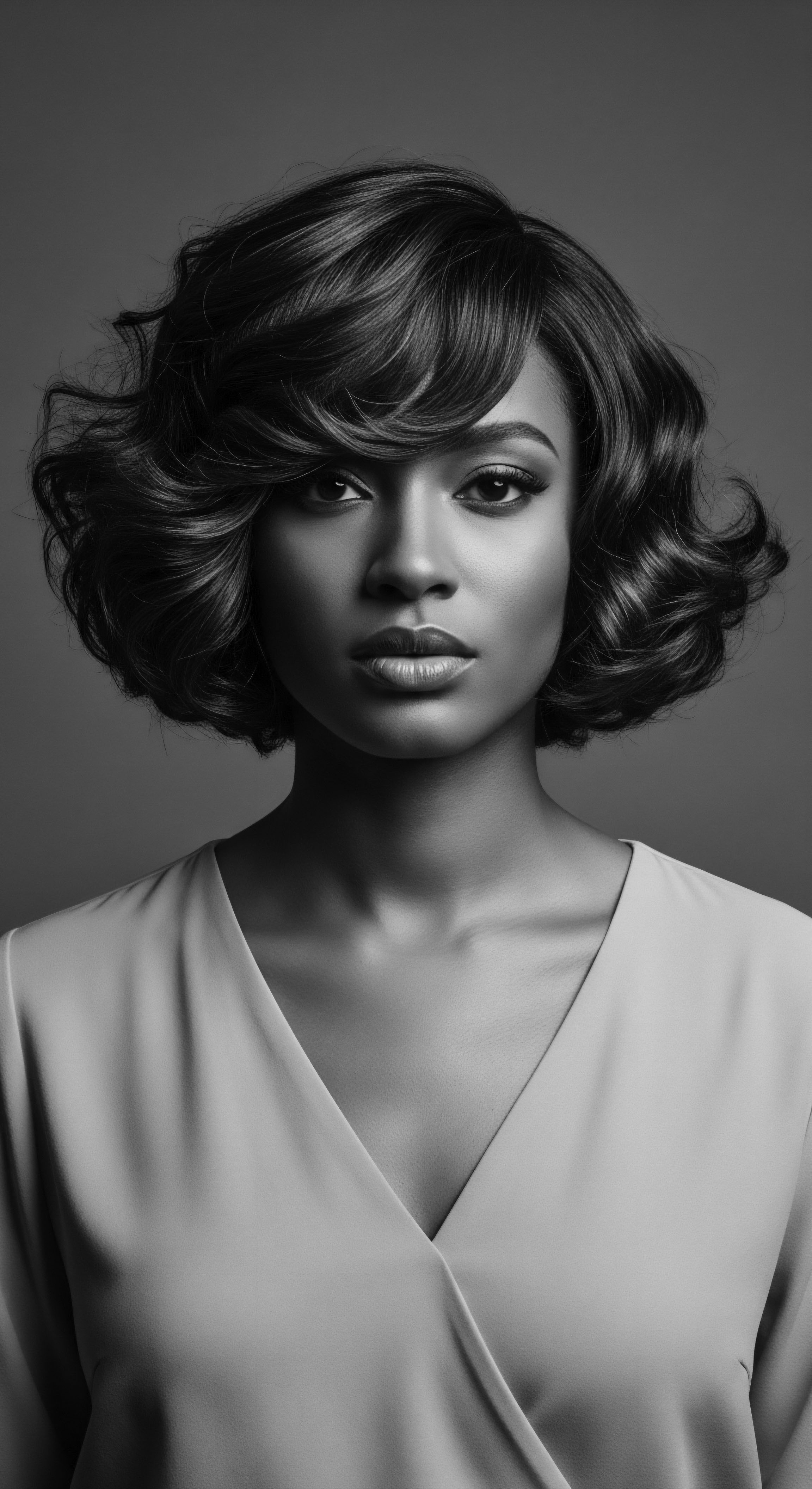
Protective Styling Through the Ages
Protective styles, a cornerstone of textured hair care, possess a history spanning thousands of years in African societies. These styles, ranging from intricate braids to twists and locs, were not merely decorative. They served as visual markers, signifying an individual’s identity ❉ their age, marital status, wealth, religious beliefs, or even their tribe. The halo braid, for instance, has roots stretching back to the first century.
During the transatlantic slave trade, when many African people were forcibly brought to the Americas, a systematic effort was made to strip them of their cultural identity, often beginning with the shaving of their heads. Yet, in acts of quiet defiance and sheer survival, enslaved individuals repurposed traditional braiding techniques. Cornrows, in particular, became a covert communication system, sometimes used to map escape routes or hide seeds for nourishment during flight. This ingenius use of hair as a tool for liberation speaks volumes about the intrinsic link between hair, identity, and resistance.
Protective styles, born from centuries of communal practice and adapted for survival, continue to hold a central place in textured hair beauty.

Traditional Styling Techniques and Modern Echoes
The techniques employed in pre-colonial Africa were extensive, often showcasing significant artistic skill. These included:
- Braiding ❉ Complex patterns, from simple cornrows to geometric designs, often adorned with beads or cowrie shells.
- Twisting ❉ A common method for managing hair, especially in cultures that celebrated natural textures.
- Locking ❉ Another ancient technique for forming natural hair into ropes or dreadlocks.
Modern natural styling techniques, emphasizing definition and minimal manipulation, draw direct lineage from these ancestral methods. The Bantu knot, a popular style today, is a traditional African hairstyle from the Bantu people. This continuity shows how historical practices were not lost but adapted, maintaining their aesthetic and functional relevance across centuries.
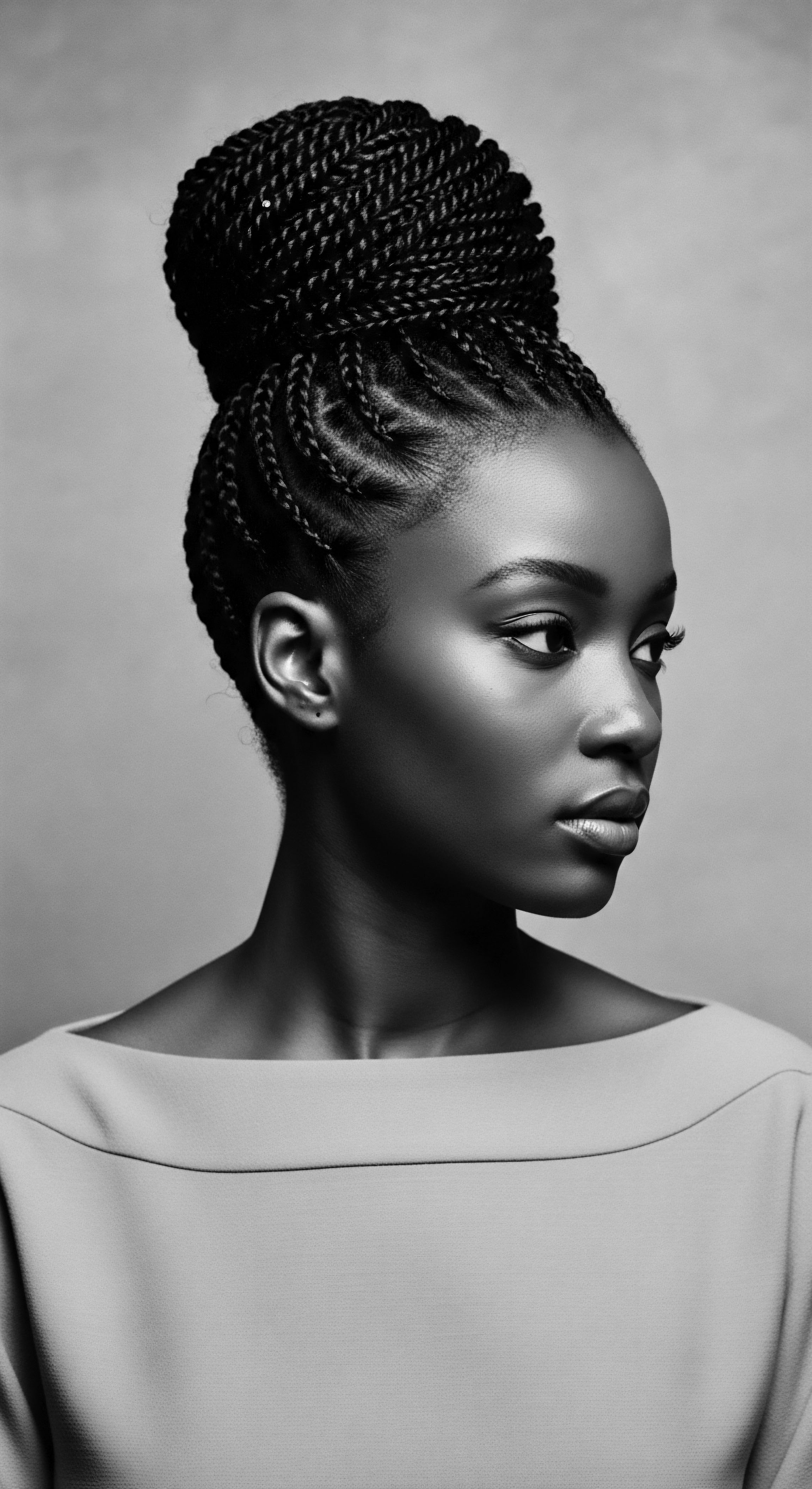
Hair Adornment and Tools
Tools and adornments were integral to hair practices across African cultures. The afro comb, a tool dating back over 6,000 years, was found in ancient Sudanese and Egyptian archaeological sites, carved from wood, bone, or ivory. These combs were not mere grooming items; they were symbols of status, group affiliation, and spiritual beliefs, often decorated with motifs referencing nature and the traditional spiritual world.
Another significant historical tool, the hair bonnet or headwrap, also carries deep African heritage. Traditional attire in regions like Ghana and Namibia, where they were known as dukus or doek, headwraps indicated wealth, ethnicity, marital status, or emotional state. During enslavement, bonnets and headwraps were weaponized to mark Black women as lesser.
Despite this, Black women reclaimed them as a form of cultural expression, resilience, and a way to protect hair under harsh conditions. The continued use of bonnets today, particularly silk or satin-lined ones, speaks to this legacy of practical protection and cultural pride.
| Historical Tool/Practice Afro Comb |
| Ancestral Context Status symbol, spiritual object in ancient Kush and Kemet. |
| Modern Application/Significance Styling tool, symbol of Black pride during civil rights movement. |
| Historical Tool/Practice Hair Bonnets/Wraps |
| Ancestral Context Cultural attire, status indicator in West Africa; forced wear during slavery. |
| Modern Application/Significance Nighttime protection, moisture retention, fashion accessory; symbol of resilience. |
| Historical Tool/Practice Hand-Kneading (e.g. Shea Butter) |
| Ancestral Context Traditional process of extracting natural emollients. |
| Modern Application/Significance Authentic product formulation, connection to traditional craft. |
| Historical Tool/Practice Tools developed for historical needs persist, imbued with deeper cultural meaning in modern times. |
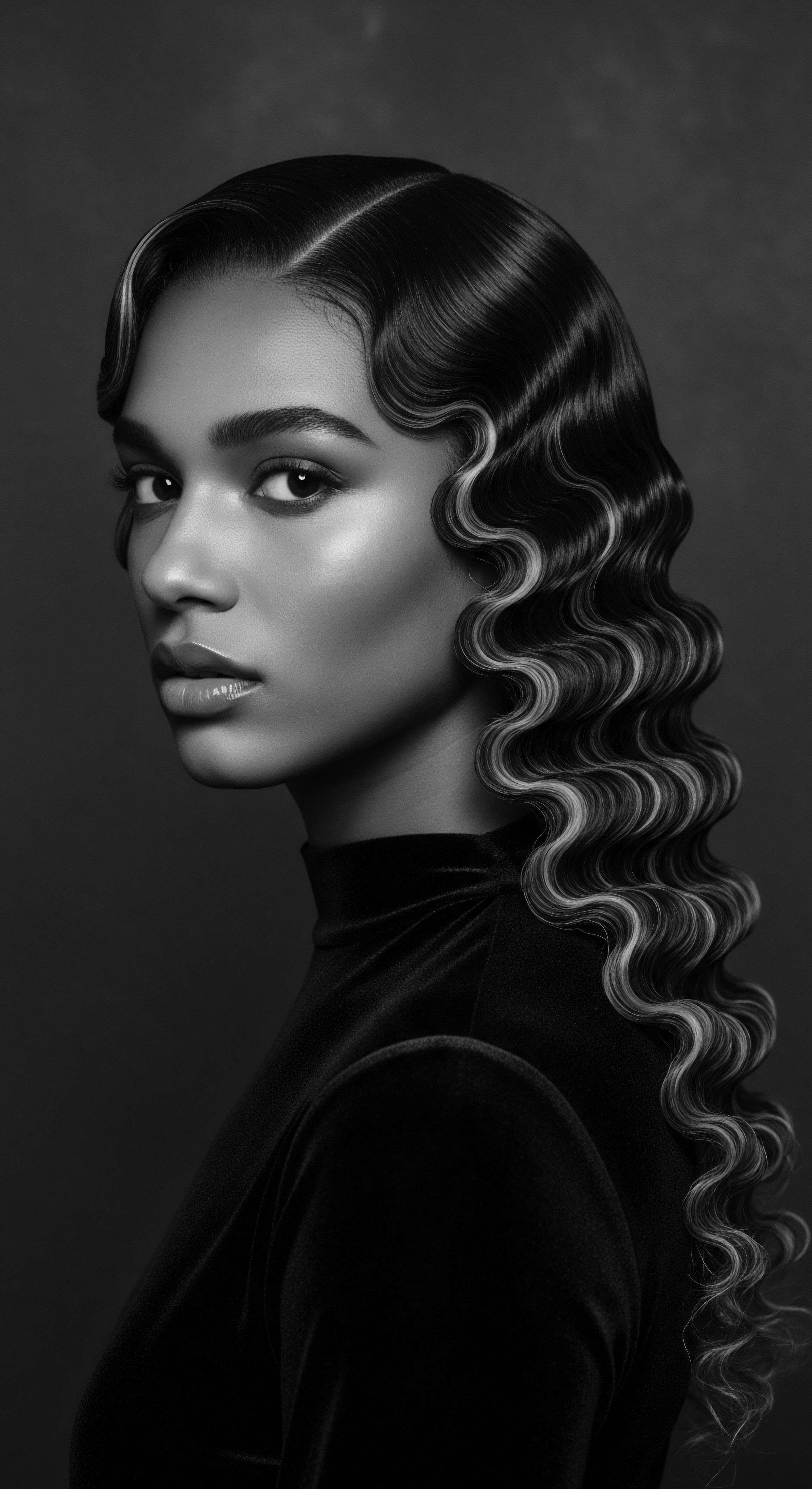
Relay
The continuing journey of textured hair care from antiquity to our present moment represents a profound relay of knowledge, adapted and refined across continents and centuries. This segment delves into how ancient remedies and communal practices, once born of intuitive wisdom, find resonance and validation through modern scientific inquiry, profoundly shaping contemporary beauty standards and wellness philosophies for textured hair. It asks how we can better understand the convergence of old ways and new science.

Can Modern Science Validate Ancient Hair Practices?
Modern trichology and biochemical analysis frequently confirm the efficacy of ancestral hair care methods. For instance, the age-old practice of scalp oiling, known as Shiro Abhyanga in Ayurvedic traditions, has been shown to increase blood flow to hair follicles, promoting nutrient delivery and potentially stimulating growth. Similarly, the use of fermented rice water by the Red Yao tribe for millennia, which contributes to remarkable hair health even into old age, is now understood to enhance nutrient bioavailability and potency through microbial activity, creating beneficial compounds that strengthen the hair cuticle and balance scalp pH.
The application of oils for cleansing, rather than stripping, hair, a method utilized by ancient Egyptians with castor and olive oils, aligns with the chemical principle of “like dissolves like.” This approach effectively removes excess sebum and impurities while preserving the scalp’s vital moisture barrier. Such examples highlight a powerful synergy between observational ancestral wisdom and rigorous scientific understanding.

How Do Ancestral Ingredients Inform Today’s Formulations?
The ingredients central to historical hair care continue to serve as cornerstones in modern textured hair products. Consider shea butter, revered for millennia in West Africa as “Women’s Gold.” This natural emollient, extracted through traditional hand-kneading processes, was used to protect skin and hair from harsh climates, serving as a healing balm and a daily staple. Its high concentration of essential fatty acids, vitamins, and minerals locks in moisture, smooths frizz, and protects against environmental stressors. Today, shea butter remains a ubiquitous ingredient in conditioners, creams, and stylers for textured hair, a direct lineage from its ancient uses.
Beyond shea, other natural elements hold their place. Coconut oil, known for its moisture-retaining properties, was used by African ancestors. Amla (Indian Gooseberry), rich in Vitamin C and antioxidants, supports collagen production for hair health. The endurance of these ingredients in formulations today signals a collective recognition of their enduring efficacy, linking contemporary regimens directly to a heritage of natural healing.
The seamless integration of traditional African ingredients into modern hair care products speaks to the enduring efficacy of ancestral wisdom.

The Evolving Visual Language of Textured Hair in Beauty Standards
Textured hair, historically a visual language for identity, status, and community, has weathered centuries of shifting beauty standards, often imposed through colonial and enslavement eras. For generations, many Black Americans felt pressure to conform to Eurocentric ideals, leading to widespread use of chemical straighteners or hot combs.
The mid-20th century, particularly the Civil Rights and Black Power movements, marked a turning point. The Afro style rose as a powerful symbol of Black pride, defiance against societal norms, and a rejection of Eurocentric beauty ideals. This cultural shift encouraged individuals to embrace their natural hair, sparking the growth of a dedicated hair care industry.
Today, textured hair is celebrated in its myriad forms, a direct continuation of this legacy of self-acceptance and cultural reclamation. The increasing visibility of coils, curls, and waves across media platforms challenges entrenched beauty standards and reinforces the idea that ancestral hair practices are not simply historical artifacts but living, breathing expressions of heritage that influence contemporary aesthetics. This dynamic interplay showcases how what was once deemed “unprofessional” is now a symbol of confidence and cultural affirmation.
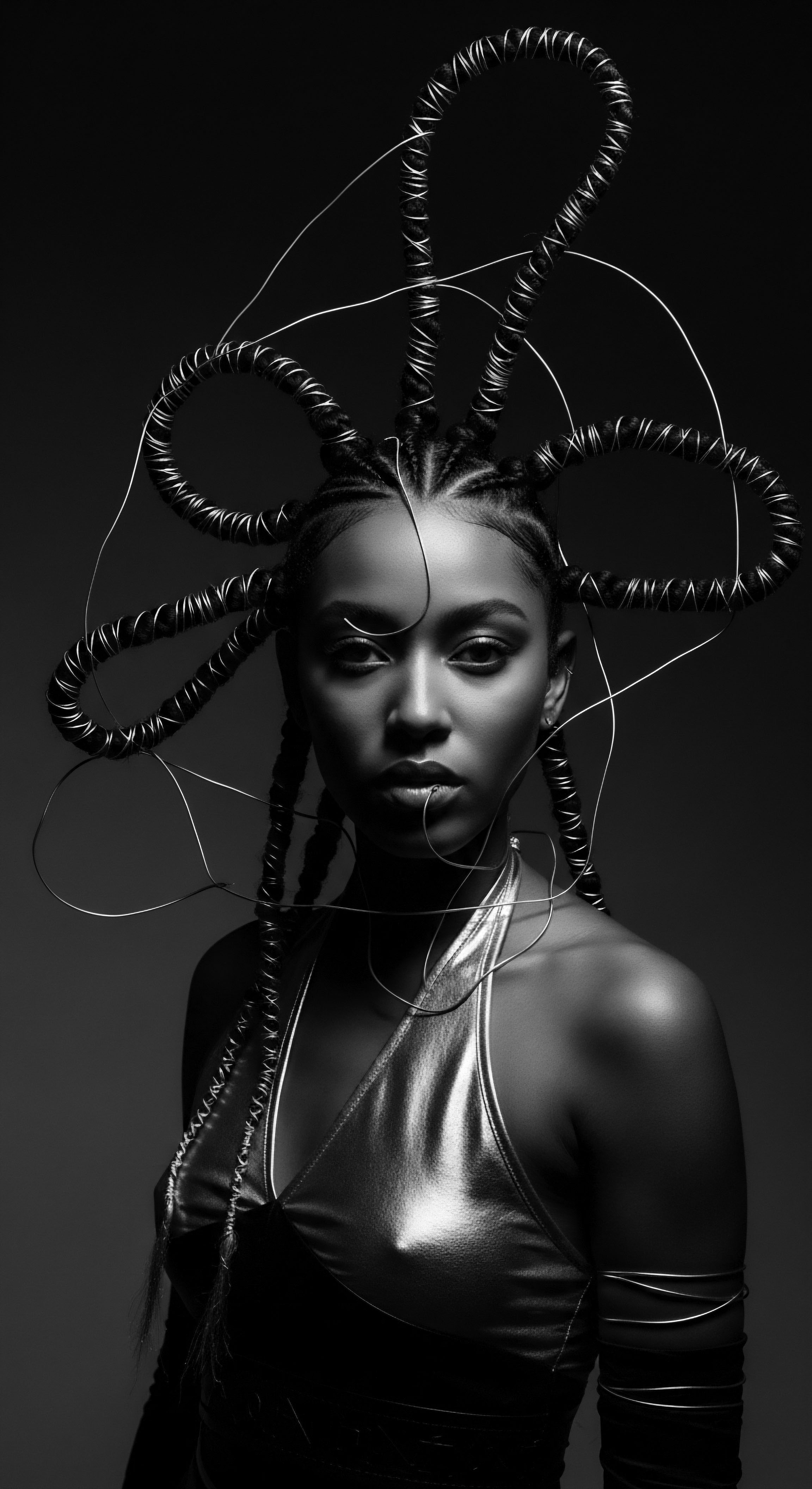
Reflection
The journey through the textured hair landscape reveals more than mere strands and styles; it unveils a vibrant, living archive where every coil and curl holds ancestral memory. The question of whether historical hair practices continue to shape modern beauty standards for textured hair finds its answer in the very fibers of our being, echoing through the practices we instinctively reach for and the sense of identity we wear with pride. The ‘Soul of a Strand’ is indeed a meditation on this enduring heritage.
From the biological blueprint of sun-adapted curls to the ingenious protective styles that communicated covert maps to freedom, the historical narrative of textured hair is one of adaptation, resistance, and self-expression. The hands that braided cornrows in ancient African villages, or those that applied shea butter to nourish scalps in challenging times, have laid the groundwork for today’s comprehensive regimens. We find ourselves, in this modern era, drawing not just inspiration, but tangible, scientifically sound practices from these deep wells of wisdom.
Consider the simple act of wrapping one’s hair at night ❉ it is a contemporary ritual that carries the echoes of headwraps used for centuries, first as cultural signifiers, then as tools of survival and quiet rebellion. The tools we choose, the ingredients we seek, and the very celebration of our natural textures are all imbued with the resilience and ingenuity of those who came before us. This is a legacy that transcends fleeting trends; it is a profound connection to lineage, a recognition that the beauty of textured hair is inseparable from its powerful, ancestral story. Each conscious act of care becomes a continuation of this heritage, a whisper across time, affirming the enduring power of who we are.

References
- Caffrey, Cait. Afro-textured Hair. EBSCO Research Starters, 2023.
- Shim, Synia. Our Hair ROOTS ❉ Incorporating our Black Family Hair Traditions and Routines as a Coping Technique to Increase Positive Mental Health. PsychoHairapy, 2024.
- Christivie. The history of Black Hair. BLAM UK CIC, 2022.
- The Fitzwilliam Museum. Origins of the Afro Comb. Fitzwilliam Museum, University of Cambridge.
- Science of Rice Water Hair Treatments ❉ Ancient Wisdom Meets Modern Beauty. 2025.
- Donaldson, Star. The Significance and History of Bonnets. Byrdie, 2022.
- CurlyTreats. Afro comb ❉ the cultural and political legacy behind this iconic hair tool. CurlyTreats, 2025.
- Helix Hair Labs. The History of the Hair Bonnet. Helix Hair Labs, 2023.
- Dube, S. What Every Dermatologist Must Know About the History of Black Hair. Cutis, 2023.
- Creative Support. The History of Black Hair. Creative Support, 2022.
- Beauty Garage. Shea Story. Beauty Garage, 2024.
- Burlock, Shelia, Sylvia, and Melissa. My Divine Natural Hair. Elephant Journal, 2024.
- childish mane llc. ROAD TO FREEDOM ❉ How Enslaved Africans in America Used Hair Styles to Map Escape Routes. childish mane llc, 2023.
- Odele Beauty. A History Lesson On Hair Braiding. Odele Beauty, 2024.
- Our Ancestories. The Evolution of the Afro Comb. Our Ancestories, 2021.
- Africa Rebirth. The African Tales of The Historical 7000 Year Old Afro Comb. Africa Rebirth, 2022.
- Assendelft. Pre-Colonial African Hairstyles ❉ A Journey Through Time and Culture. Assendelft.
- Ancient Origins. African Slaves Used Braids to Communicate Escape Routes in Colombia. Ancient Origins, 2022.
- CBC Radio. Tangled Roots ❉ Decoding the history of Black Hair. CBC Radio, 2021.
- Nuevo Noir. The history of Afro hair. Nuevo Noir, 2024.
- متجر زبدة الشيا. What Is Shea Butter? متجر زبدة الشيا, 2024.
- Rolling Out. The ancient haircare secret that’s backed by modern science. Rolling Out, 2025.
- ArcGIS StoryMaps. Hair Mapping. ArcGIS StoryMaps, 2023.
- Thrifts & Tangles. The Evolution of Black Hair for Beauty & Resistance. Thrifts & Tangles, 2021.
- Discovering the Origins of Shea Butter – A Journey to the Heart of Africa. 2024.
- Know Your Hairitage. African Culture. Know Your Hairitage.
- Pick Progress. History. Pick Progress.
- Byrdie. The History and Evolution of Hair Bonnets ❉ From Traditional to Modern Styles. Byrdie, 2024.
- Team True Beauty. The Significance and History of Black People Bonnets. Team True Beauty, 2023.
- British Journal of Dermatology. H04 A historical journey of the structure, texture, and identity of afro-textured hair. British Journal of Dermatology, 2024.
- Noma Sana. The History of Straightening Afro Hair ❉ Culture, Trends & Identity. Noma Sana, 2024.
- The History of Black People Braiding Their Hair. 2023.
- Hype Hair. Unveiling the History of the Hair Bonnet for Black Women. Hype Hair, 2023.
- The History and Evolution of Hair Bonnets ❉ From Traditional to Modern Styles. 2024.
- British Journal of Dermatology. H04 A historical journey of the structure, texture, and identity of afro-textured hair. British Journal of Dermatology.
- Jean Louis David. Shea ❉ African women’s golden product. Jean Louis David.
- University of Salford Students’ Union. The Remarkable History Behind Black Hairstyles. University of Salford Students’ Union, 2024.
- Sartorial Magazine. Braids, Locs, and Beyond ❉ The Beauty and History of Protective Styles. Sartorial Magazine, 2025.
- Kilburn & Strode. Afro-texture ❉ a hair-story. Kilburn & Strode, 2021.
- Prairie Lights Books. African Holistic Health for Women ❉ Ancient Tribal Remedies, African American Herbalism, Black Medicine and Other Ancestral Cures to Revive your Divine. Prairie Lights Books, 2024.
- ResearchGate. “Going natural” ❉ Black women’s identity project shifts in hair care practices. ResearchGate, 2024.
- TikTok. African Ancestors Hair Routine. TikTok, 2025.
- Rthvi. Exploring Ancient Hair Care Rituals ❉ Timeless Practices for Modern Hair Wellness. Rthvi, 2024.
- YouNeek Pro Science. Hair Care Rituals ❉ Combining Tradition with Modern Science. 2025.
- Psych Central. PsychoHairapy ❉ A Ritual of Healing Through Hair. Psych Central, 2022.
- Odele Beauty. A History Lesson On Hair Braiding. Odele Beauty, 2024.
- Africa Rebirth. The African Tales of The Historical 7000 Year Old Afro Comb. Africa Rebirth, 2022.
- Team True Beauty. The Significance and History of Black People Bonnets. Team True Beauty, 2023.
- The History and Evolution of Hair Bonnets ❉ From Traditional to Modern Styles. 2024.
